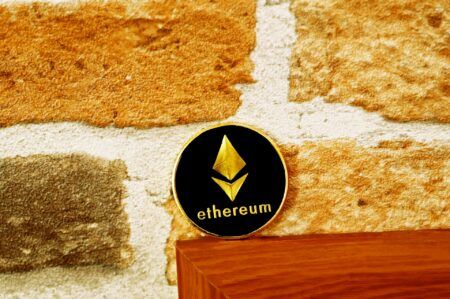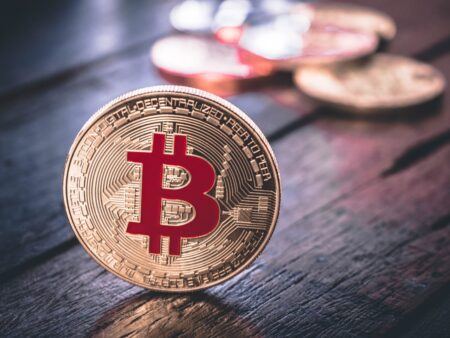Facebook’s Libra project generated an enormous amount of anticipation in the crypto community. With its official announcement and the release of the white paper, the world at large has now woken up to how important the new cryptocurrency and blockchain could be.
The release also raised a host of uncertainties about the project. Will it successfully navigate the thorny regulatory road ahead? Will people trust a Facebook-launched product with their money after the reputational damage of Cambridge Analytica and other privacy scandals? Will Google, Amazon and other tech giants soon follow suit with their own native tokens?
Perhaps the most pressing question that has animated the crypto community since the announcement however, has been whether Libra will be a net positive or negative for Bitcoin and the broader cryptoasset ecosystem.
Will Libra be Good or Bad for Bitcoin?
On one end of the spectrum, some believe that Libra – if successful – will likely be a net negative for Bitcoin and cryptocurrencies. For them, Libra runs very much counter to the spirit of a decentralized, peer-to-peer form of money and store of value. A permissioned, fiat-pegged coin from such a large multinational – and one that has a terrible track record with privacy – may absorb an enormous swathe of the potential market for the decentralized cryptocurrencies. Rather than adopting a permissionless, decentralized and hard form of money, new users will instead accept this poor substitute en masse as more than 2.5 billion people using Facebook, WhatsApp and Instagram are exposed to the Libra.
For others, Libra may well prove to be a net positive for Bitcoin and other decentralized cryptoassets. While they acknowledge that the coin is severely lacking in true ‘crypto credentials,’ they point to the fact that it is still – in name at least – a “cryptocurrency.”
For billions around the world, therefore, this will be their first real exposure to cryptocurrencies and the broader crypto ecosystem. Offering an entry point into the world of crypto, they argue, Libra will in fact bring millions to decentralised cryptoassets – both through general exposure to the idea of a tokenized asset, and because they will realize the superiority of a harder, truly permissionless form of money.
The Rise of Stablecoins: Libra’s Existing Rivals
Even if Libra is approved, which is by no means guaranteed – it will not be entering a market that is without competition. While Tether (USDT) still dominates the market, the number of stablecoins has grown dramatically in 2018 and 2019.
Trading volumes of stablecoins have gone up enormously in cryptoasset markets in the last year – drawing in a great deal of capital into the crypto ecosystem. The chart from StablecoinIndex below shows just how much volumes have grown in 2019 for many of the major stablecoins:

USDK, a newer USD-pegged stablecoin from OKLink, has seen its circulation reach 23 million tokens in just 2 weeks since launch, and across the board, fiat-collateralized stablecoins are performing the best in terms of trading volume and stability.
At the moment, fiat-collateralized stablecoins still perform the best in terms of trading volume and their stability – due to their low volatility. But there are still many challenges that face the existing market leaders and Libra alike.
Regulatory Tightening
Tether for example has been dogged by consistent speculation that its assets are not backed fully in the way they have claimed. The company recently updated the terms on its website to indicate that USDT is backed by cash “or cash equivalents.”
Many within the cryptoasset space see nothing untoward in this regard, while others are less sure of the company’s transparency with some on Twitter regularly beating the drum of Tether conspiracy.
While there is no evidence yet of any actual wrongdoing on the part of Tether or its sister company Bitfinex, regulators have been scrutinizing the companies, which are currently embroiled in a legal battle with the New York Attorney General.
Facebook’s Libra too will likely face enormous regulatory hurdles. Lawmakers in France, the US and elsewhere were very quick to voice their opposition to the proposed plan for the Libra blockchain and cryptocurrency. Most recently, five members of the US Congress sent an open letter to Mark Zuckerberg, COO Sheryl Sandberg, and Libra CEO David Marcus calling for a moratorium on any development on Libra Libra and its digital wallet, Calibra, writing:
It appears that these products may lend themselves to an entirely new global financial system that is based out of Switzerland and intended to rival U.S. monetary policy and the dollar.
In this climate of increasing regulatory scrutiny therefore, the onus is on existing stablecoins to up their games in terms of compliance, transparency and counterparty risk.
USDK is aiming to do just that – offering a more transparent and compliant stablecoin. Launched on Jun 3rd, the new USD-pegged stablecoin was developed and delivered in conjunction with Prime Trust, the registered Trust Company based in Nevada.
USDK has from the outset aimed at greater transparency. The trust company has enlisted an independent auditor to issue monthly reports on the USD balance, ensuring the integrity of the stablecoin.
The latest audit was just released by OKLink and Prime Trust, where they appointed the major US accounting firm Armanino to audit the holdings backing USDK. The audit confirmed the total of $23,000,072 held in trust – matching the outstanding USDK balance of the tokens issued.
Complex Road Ahead
With growing demand from regulators, increasing competition in the stablecoin market and more scrutiny placed on cryptoasset markets in general, it’s clear that compliance and transparency will be a key battleground in the next phase of the evolution of stablecoins. Whether Libra will successfully traverse the regulatory obstacles ahead, and it will impact the existing stablecoin landscape, remains to be seen.









